Interview with “Sting” Director Kiah Roache-Turner
Written by: Patrick Howard | April 17th, 2024
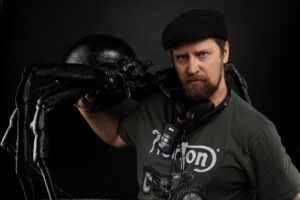
Kiah Roache-Turner, a filmmaker who is no stranger to blood and guts, dabbles in the tried-and-true, and always entertaining, genre of the creature feature. His new film, Sting (which I reviewed last week), employs the terror of both arachnophobia and claustrophobia with a giant spider running amok in a rundown apartment building. I had the great pleasure of virtually sitting down with Mr. Roache-Turner to speak with him about the appeal of monster movies, working with WETA Digital, and the importance of balancing scares and human drama. Below is a transcript of that conversation, edited for length and clarity.
Patrick Howard: Mr. Roach Turner, thank you for agreeing to virtually sit down with me and answer a few of my questions.
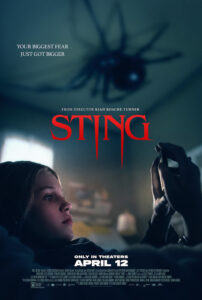 Kiah Roache-Turner: Thank you for choosing Sting to talk about.
Kiah Roache-Turner: Thank you for choosing Sting to talk about.
PH: As a lover of the creature feature, I really want to know what major influences you pulled from the most when developing the world and atmosphere of Sting?
KRT: Yeah, this one was very influences driven. I’m a pretty derivative filmmaker, so influences are big for me, but this one had very specific stuff like The Hobbit, which was my favorite book growing up, with that whole sequence in Mirkwood in the middle, where they’re fighting the spiders, and Bilbo has his little sword called Sting that he kills spiders with. That’s where the film’s name came from. My favorite writer is Stephen King. And I was very much influenced by It. Spoiler alert, in the end, it’s not a killer clown, it’s a giant spider from outer space. And although I love the recent movie adaptation of that, I was very disappointed when they didn’t have a giant spider at the end. It just remained a clown, and I was like, “Alright, well, if you’re not gonna do it, I’ll do it.” In terms of films, I mean, Alien is all over this; Alien is a single-location horror movie where a bunch of people battle something that kind of looks like a giant killer horrible insect.
PH: What was your process in landing on the idea of pairing a giant alien spider with the story of a fractured but newly forged family?
KRT: Well, I think any horror film that doesn’t make you connect with audiences isn’t really worth its weight. I just kind of templated my own family, so at the time of conception and writing, it was in the middle of COVID, and it was a dark time for everybody. And you were trapped inside with your family, so I just took what was happening in my family. We had just had a baby. And there was crazy stuff going on in the world, and it was quite dramatic, and I’m a stepfather, and so I used a lot of that stuff. And if it feels at all real or you’re connected to the family dynamic in a way, it’s probably because it comes from a real place.
PH: The story of Sting fits in the “a kid and their special pet” sub-genre. I’m talking about movies like E.T: The Extra-Terrestrial. One thing that I noticed in those stories is that the parents take a major backseat. We might get a little bit of what they’re going through, but it’s really the kid’s movie. Could you explain your decision in letting the parents have a bigger presence in the story of Sting?
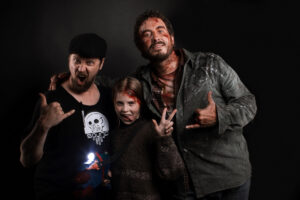
KRT: It was a really difficult balance. While I was writing it, I couldn’t make a decision. You know, the producers kept saying, “Look, whose movie is it? Is it Ethan’s or is it Charlotte’s?” And I’m like, “Ethan kind of represents me, but Charlotte’s kind of the star.” I wasn’t even sure. So I knew that the two of them were going to be kind of a two-hander and then there’s that old thing of “you make a movie to find out how to make the movie.” When I shot the movie, and I started looking at it in the edit, I was like, “Oh, man, it’s Charlotte’s movie. It’s about the girl.” And, you know, I almost wish I’d known that back when I was writing it, because I could have maybe strengthened that, but instead, we strengthened it in the edit and that’s the thing, where you write a movie three times in the script, you write it again when you’re making it, and then you write it again when you’re editing it. And we really found that balance in the edit, where it’s very much Charlotte’s film, but getting the balance between how much of the parents you show, there’s a version of this movie where you concentrate one hundred percent on Charlotte [played by Alyla Browne], and it’s all from her perspective, but I kind of wanted to tell the story of a family. I didn’t want to just tell the story of a little girl.
PH: With this film, you’re working with the exceptional visual effects artists of WETA Digital. Was there a specific moment in that collaboration that really stood out to you as memorable?
KRT: Probably the best moment was when I had a meeting with [WETA founder] Richard Taylor and he goes, “So what do you want? What are you thinking of?” And I go, “I want it to be realistic. I don’t want to make a crazy alien weird spider. I want it to look like a realistic spider.” And he goes, “Oh yeah. What kind?” And I go “Redback,” and he goes, “Ah, I’m so glad you said that! We just made the Redback equivalent, which is a New Zealand katipō spider.” He’s like, “Dude, we’ve been working on this for months and months and months. It’s an exact replica of a Redback spider. The work’s already done.” When you hear that, it’s just like all the worlds collided, like he’d already been working on the spider that I wanted in my head for six months. And so I mean that kind of something is just like a godsend to an independent filmmaker.
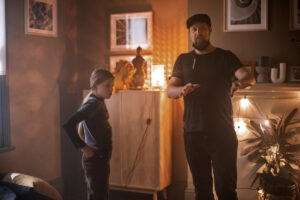
PH: One thing I love about the creature features of old was that those filmmakers really had to use a lot of necessary creativity just to pull off those effects. Did you plan to use an assortment of effect techniques to bring the titular Sting to life, or was digital always going to be the path you’d go down?
KRT: Yeah, I mean a lot of it was just old-school puppetry. You’ve got people with spider claws interacting with screaming people. You’ve got like a giant spider head that has mandibles, and you’ve got to just be careful of your framing with all that kind of stuff. And there was a point where we just got, like, a big rubber stunt spider and threw it at Ryan Corr [who plays Ethan]. And then if you combine that cleverly, with the modern technology and the amazing stuff that you can do digitally these days, you’ve got this kind of wonderful old-school scariness. If you can find that balance between the two, then you’ve got modern horror.
PH: Could you talk about the process or any unique techniques that were used in terms of sound design?
KRT: Forty percent of horror is sound design. It’s those creepy footsteps; it’s that growling sound from the shadow; it’s the bump in the night. You know? The sound of the creature is so important and so to be able to create a creature purely in sound design is one of my favorite things in the world.
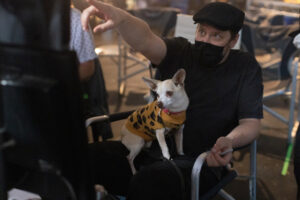
PH: For filmgoers who don’t usually watch horror films, what would you say to persuade them to give Sting a chance?
KRT: As a horror filmmaker, what I’m always going for is not to just make a “horror” film, but just a film. Everybody is like, “How can you make such horrible things?” I say, “How can you watch 12 Years a Slave?” I mean that is brutal. Have you seen the opening 10 minutes of Saving Private Ryan? It’s so gory. You guys don’t mind watching this when it’s good. Jaws isn’t considered a horror film; it’s considered a really good film about a shark that’s really scary. Alien is considered a brilliant science-fiction film. It’s a horror film! A horror film can transcend if it connects with the audience in the right way. And that’s what you’re always trying to do. Make a film that is so good that it transcends its own genre.
PH: Thank you for spending time with me, Mr. Roache-Turner, and answering my questions. I loved the film. I hope it gets a physical release, and I look forward to your next film.
KRT: Thank you so much, Patrick. My next film is, ironically, going to be a giant shark movie. So that’ll be fun. More puppets!
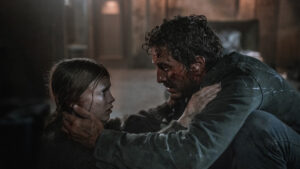


I really enjoyed the interview. You can tell Patrick has a real grasp of the film making process.